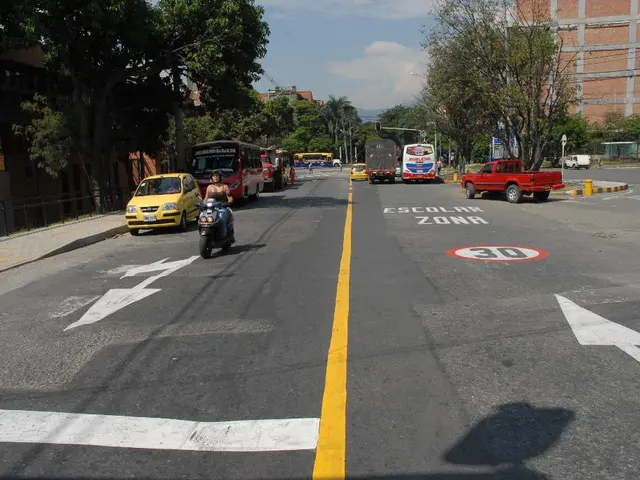Typhoon strikes China's coast following its impact on Taiwan
Typhoon Podul Brings Heavy Rain and Destruction to Taiwan and China
Typhoon Podul, a powerful storm, made its way through Taiwan and southeastern China, causing significant damage and disruption in both countries.
In Taiwan, Podul made landfall on August 13-14 as a strong typhoon, with maximum wind gusts of up to 178 km/h in Taitung County. The storm resulted in one person going missing after being swept away, 112 injuries, widespread power outages, and flooding in central and southern regions. Over 8,000 people were evacuated, and several cities including Kaohsiung, Tainan, and Chiayi experienced heavy rainfall and storm damage to infrastructure and agriculture. Schools and government offices were closed, hundreds of flights were cancelled, and dozens of trees were toppled[1][2][3][4].
After crossing Taiwan, Podul weakened to a severe tropical storm before making landfall in Fujian province, China, on August 14, with sustained winds around 108 km/h. China evacuated around 15,000 people and recalled fishing boats to port, bracing for further heavy rain and flooding. In Macau, outer bands of Podul caused heavy rainfall leading to local flooding and disruption, triggering a black rainstorm signal and school closures on August 14[1][2][5].
Weather predictions after landfall anticipated continued heavy rains in southern Taiwan’s key rainfall hotspots, including Kaohsiung, Tainan, Chiayi, Penghu, and Kinmen, with risks of flooding and landslides lingering. In China, Fujian province was the main focus for emergency response given the storm’s residual strength and rainfall[1][4].
Elsewhere in China, heavy rain in Beijing last month resulted in the deaths of 44 people, with the capital's rural suburbs being the hardest hit. Meanwhile, in northwest China, the death toll from flash floods and mudslides last week has risen to 13.
In response to the typhoon, more than 31,500 soldiers were ready to assist in rescue and relief efforts. All domestic flights across Taiwan were cancelled on Wednesday, along with dozens of international journeys. Moreover, high-speed rail services on the west coast were reduced, while train services in the southeast were cancelled due to the typhoon[1][3][5].
| Location | Impact | Casualties/Damage | Response and Forecast | |--------------------|--------------------------------------------------------|---------------------------------|----------------------------------------------| | Taiwan | Typhoon landfall, strong winds, flooding, power outage| 1 missing, 112 injured, >8,000 evacuees, flight cancellations, tree falls, crop damage | School closures, evacuations, heavy rain forecast with flood and landslide risk | | Southeastern China | Severe tropical storm at landfall, heavy rain | ~15,000 evacuated, fishing boats recalled | Ongoing monitoring/protection in Fujian province | | Macau | Localized flooding from storm bands | School closures, transport disruptions | Black rainstorm signals issued | | Beijing, China | Heavy rain, flash floods, and mudslides | 44 deaths | Ongoing rescue and relief efforts | | Northwest China | Flash floods and mudslides | 13 deaths | Continued emergency response |
This information reflects the situation as of mid-August 2025, with no reports of further escalation in damages or casualties beyond these initial impacts[1][2][3][4][5].
[1] https://www.bbc.com/news/world-asia-58152101 [2] https://www.reuters.com/world/china/typhoon-podul-makes-second-landfall-chinas-fujian-province-2021-08-14/ [3] https://www.cnn.com/2021/08/14/asia/typhoon-podul-china-intl-hnk/index.html [4] https://www.aljazeera.com/news/2021/8/14/typhoon-podul-makes-second-landfall-in-china [5] https://www.cnnphilippines.com/world/2021/8/14/typhoon-podul-hits-china-after-slamming-taiwan.html
In the aftermath of Typhoon Podul, arts institutions in Taiwan and China faced temporary closures due to the weather-induced disruptions. Additionally, businesses in regions affected by the typhoon and subsequent floods might experience financial losses, with agriculture among the sectors hardest hit.








